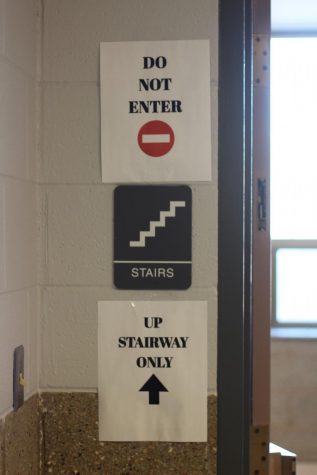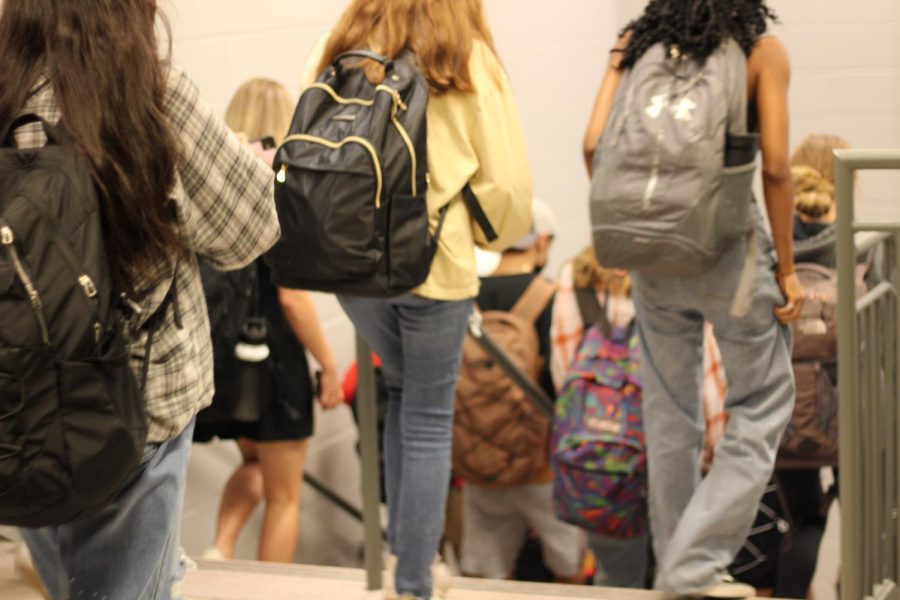The Staircase Situation: Two Ways Is Better Than One
Students walk down the one-way staircase inconveniently located in the middle of a hallway.
September 3, 2021
One-way staircases were proposed with the intention of minimizing exposure to Covid-19. The idea was, since students would all be going one way, they would cross and come into contact with fewer people. However, this plan has several flaws which need to be addressed. Otherwise, these staircases will only serve to continue inconveniencing students.
The first, most obvious flaw, is that staircases don’t really matter. Students are already traveling down two-way hallways. Students are seeing so many faces that contact tracing and risk prevention during passing periods are futile, especially if everyone is already properly wearing masks.
Moreover, the stairways end up creating so much traffic and blockage that it negates all the potential minimized contact, since students have to jam into each other and cross the entire hallway to get to the other side of the stairs.
Our school was made with an intentional layout, meaning the staircases were put in spots that made the most sense. Stairways were put at the ends of hallways so as to not disrupt students passing through the middle.

The hallway had a natural flow, and it worked.
By having a single down staircase in the middle, all students upstairs are forced into this one point, converging onto it like a black hole. This hub traps all students trying to get past the staircase, so now, everyone else has to switch lanes entirely. This creates a mob of students all going in different directions, something the stairs were designed to stop.
Not only can blockage be seen in the middle staircase, but the link is still very crowded. So now, instead of having one main intersection, we have two. This new layout didn’t reduce traffic, it just moved it around.
Hallway traffic usually dies down after the first week or two of school once students know where to go and how to get there, but this has not been the case with the stairways.
This plan does have merit, it just needs to be adjusted to account for new insight. One potential solution is to maximize use of the back staircase. Seldom used, it could work great as a two-way staircase. Then, students on one end of the hallway can easily get out without having to move back into the middle.
Another more drastic option is to reopen all the staircases. This would mostly be an issue in the link, but this could be prevented by enforcing rules saying that students not using the staircase should go around the link, which many already do.
Finally, administrators should receive feedback from students. As people who experience the impacts of these decisions the most, we have our own ideas for potential solutions.
As time goes on, it has become clearer and clearer that one-way staircases aren’t a temporary issue, but a new daily obstacle for students throughout the school, but with amendments, it can be a great plan that can potentially even improve hallway traffic flow.



